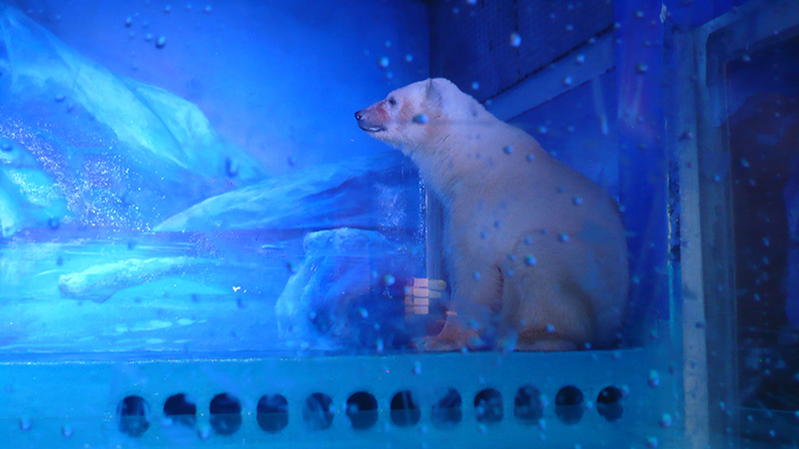Why Animals Should Not Be Used for Public Entertainment
Some facilities such as animal rehabilitation centers operate for the animals’ benefit, because they may have gotten seriously injured and can’t survive on their own in the wild, but the vast majority have one thing on their mind: money.
January 27, 2020
When animals are taken from or deprived of their natural habitats, they can become depressed, stressed, and full of misery. Many of the animals you see in zoos, circuses, and marine parks were captured from their homes and families, often brutally. They are also commonly bred for the sole purpose of human entertainment, which doesn’t allow these animals to use their natural instincts; if they do use them, they are often beaten or–in extreme cases–killed.
Some facilities such as animal rehabilitation centers operate for the animals’ benefit, because they may have gotten seriously injured and can’t survive on their own in the wild, but the vast majority have one thing on their mind: money.
Here are six environments where abuse and neglect can occur:
Circuses/Fairs
Animals such as elephants, tigers, lions, and bears are forced to learn tricks that their bodies naturally don’t allow them to do. They are whipped and punished until they are able to stand on their back legs on top of pedestals, balance on their heads, jump through hoops, and “dance.” This causes the animals to be submissive, but sometimes the animals decide that they’ve had enough abuse and finally retaliate. This either causes harm to the circus trainers or to the animals, but either way, it’s a dangerous and immoral business.
SeaWorld, Aquariums, and other Marine Parks
Studies have shown that marine animals face major psychological issues when they are forced into unbelievably small tanks with other animals of the same species that are not a part of their family. This often causes dolphins and orcas to be bullied by others with no place to escape. The movie Blackfish is an excellent resource to learn more about this awful treatment.
Zoos
Zoos are often seen as places of education. Schools all across the nation schedule field trips to zoos for educational purposes, so students can experience animals they’ve never seen before. Once again, animals are captured or bred only to be put into small exhibits with nothing to appeal to their instincts. They experience kids banging on the cages and glass walls, which adds to the animals’ daily stress.
Horse & Greyhound Racing and Cockfighting & Dogfighting
All of these can be considered “sports” depending on who you ask; nevertheless, they are still very deadly. In the instances of cockfighting and dogfighting, death is more than likely because that’s the whole point. Two roosters or two dogs go head to head and fight to the death or until they are unable to continue. This will go on for several rounds until there is a declared winner. It is very bloody and gruesome, but unfortunately, some sick people enjoy it. Both horse and greyhound racing begin with several animals lined up at a starting point. They then race for a winner. That doesn’t sound too bad, right? Wrong. Behind the scenes, these animals, especially the greyhounds, are kept in small cages. The losers of these races are sent to slaughterhouses.
Rodeos
Personally, rodeos are the events that use animals for entertainment that I am least likely to accept. This is because cows, bulls, and horses are thrown into a rink with at least one person, and they are purposely made angry or are made to run at very high and unnatural speeds just to try to escape the people. At this point, someone or something is bound to get hurt. They are also prodded or shocked if they don’t obey what the crowd or the bulldogger wants.
Here are 10 facts about animals in entertainment according to wildlife-rescue.org:
- The use of animals as “entertainers” removes animals from their natural habitat; deprives them of the ability to freely engage in instinctual behaviors; often involves cruel training methods; desensitizes both children and adults to animal mistreatment; and does not adequately address the real conservation threats that face animals in the wild.
- There is a minimal state and federal protection for animals used in entertainment. Many of the animals used for human amusement are not even covered by the federal Animal Welfare Act.
- While zoos and aquariums may appear to be educational and conservation-oriented, most are designed with the needs and desires of the visitors in mind, not the needs of the animals. Many animals in zoos and aquariums exhibit abnormal behavior as a result of being deprived of their natural environments and social structures.
- Some zoos and aquariums do rescue some animals and work to save endangered species, but most animals in zoos were either captured from the wild or bred in captivity for the purpose of public display, not species protection.
- The vast majority of captive-bred animals will never be returned to the wild. When a facility breeds too many animals they become “surplus” and often are sold to laboratories, traveling shows, canned hunting facilities, or private individuals who may be unqualified to care for them.
- Horses and cows used in rodeos are abused with electrical prods, sharp spurs, and “bucking straps” that pinch their sensitive flank area. During bucking events, horses and bulls may suffer broken legs or run into the sides of the arena, causing serious injury and even death.
- During calf-roping events in rodeos, a calf may reach a running speed of 27 miles per hour before being jerked by the neck to an abrupt stop by a lasso. This event has resulted in punctured lungs, internal hemorrhaging, paralysis, and broken necks.
- Once greyhounds begin their racing careers, they are kept in cages for more than 20 hours a day. The cages are made of wire and are barely big enough for the dogs to turn around. Dogs who are considered too slow to race are often sold to research facilities or killed. About 20,000 are killed each year; very few are adopted.
- Horses used in racing are bred for one purpose: to make money. Because of this motive, horses are often forced to run even when injured. More racehorses are bred than can prove profitable on the racetrack. As a result, hundreds of racehorses are sent to slaughter every year.
- During a typical cockfighting tournament, one-third to one-half of the birds are killed. Winners, as well as losers, suffer severe injuries including broken wings, punctured lungs, and gouged eyes.
What Can You Do To Be Involved?
To help end these acts of animal abuse, you can go to the following websites to volunteer, become an apprentice, an intern, or have a career in animal rights.





katirah • Apr 30, 2024 at 5:28 pm
hi i,m katirah i,m agiast these animal crises
Ainslee • Mar 13, 2024 at 3:16 pm
Animals shouldn’t be let out of zoos and aquariums.. They are endangered species and they should be under human care/ looking after them.. Animals although they need their natural habitat they also are going to die faster.
Alexis Rodriguez • Feb 22, 2024 at 10:29 am
THESE ANIMALS NEED TO BE FREE!!!!! MOST OF THE ANIMALS ARE DYING DOING THIS JOB, THE ANIMALS SHOULD BE FREE
Julia Mercer • May 2, 2022 at 7:17 pm
I feel really upset that people hurt these poor animals for money. It just gets so annoying with so many zoos/aquariums doing this.